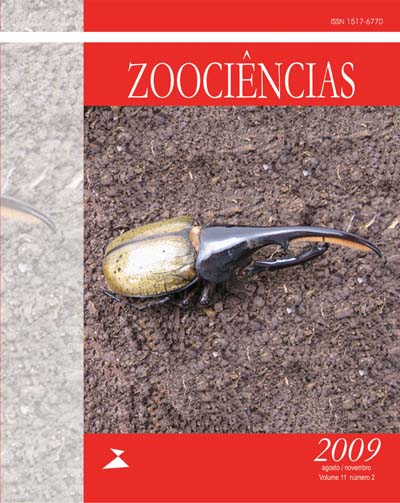Biodiversity under rocks in disturbed habitats: the role of microhabitats in landscape heterogeneity and community maintenance
Resumo
The construction of reservoirs for electric power generation is becoming a frequent action in Brazil. In thesemodified environments, the water level suffers seasonal and stochastic oscillations. The difference among maximum
and minimum water levels forms a depletion zone, in which these oscillations represent a disturbance for the installed
communities. Analyzing 30 shelters in the depletion zone of Três Marias Reservoir, we aimed to evaluate the richness
and diversity of associated communities and verify the relationship between shelter’s area, distance from water,
concentration of organic matter and humidity and communities’ traits. We collected 183 individuals distributed in 64
morfo-species of 33 families from the orders Acarina, Araneida, Scorpionida, Lithobiomorpha, Scolopendromorpha,
Coleoptera, Collembola, Dermaptera, Dictyoptera, Diptera, Ensifera, Homoptera, Hymenoptera, Lepidoptera, and
Zygentoma. Araneida was the richest order (40.4%), represented mainly by the families Salticidae and Theridiidae.
Hymenoptera (18%) and Diptera (13.1%) were abundant. Nearly 68% of the species are predators, the others are
basically scavengers. Most of the species (73%) use more than a shelter for obtaining resources. The similarity among
the shelters varied between 0 and 0.5, and most presented similarity values less than 0.3. Soil moisture was significantly
related to distance from water and organic matter and distance from water was also related to organic matter. No
correlation was observed among physical and biological variables. Shelters seem to be important in the depletion
zone of the reservoir, offering conditions and resources that make the permanence of associated communities possible
in a strongly modified area subject to stochastic disturbances.
Downloads
Não há dados estatísticos.
Downloads
Publicado
2010-03-22
Edição
Seção
Artigos



